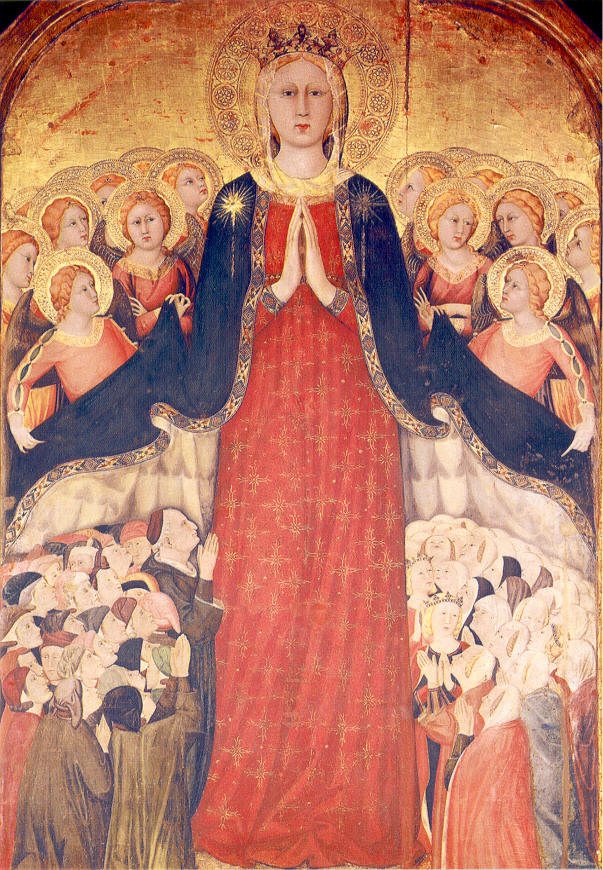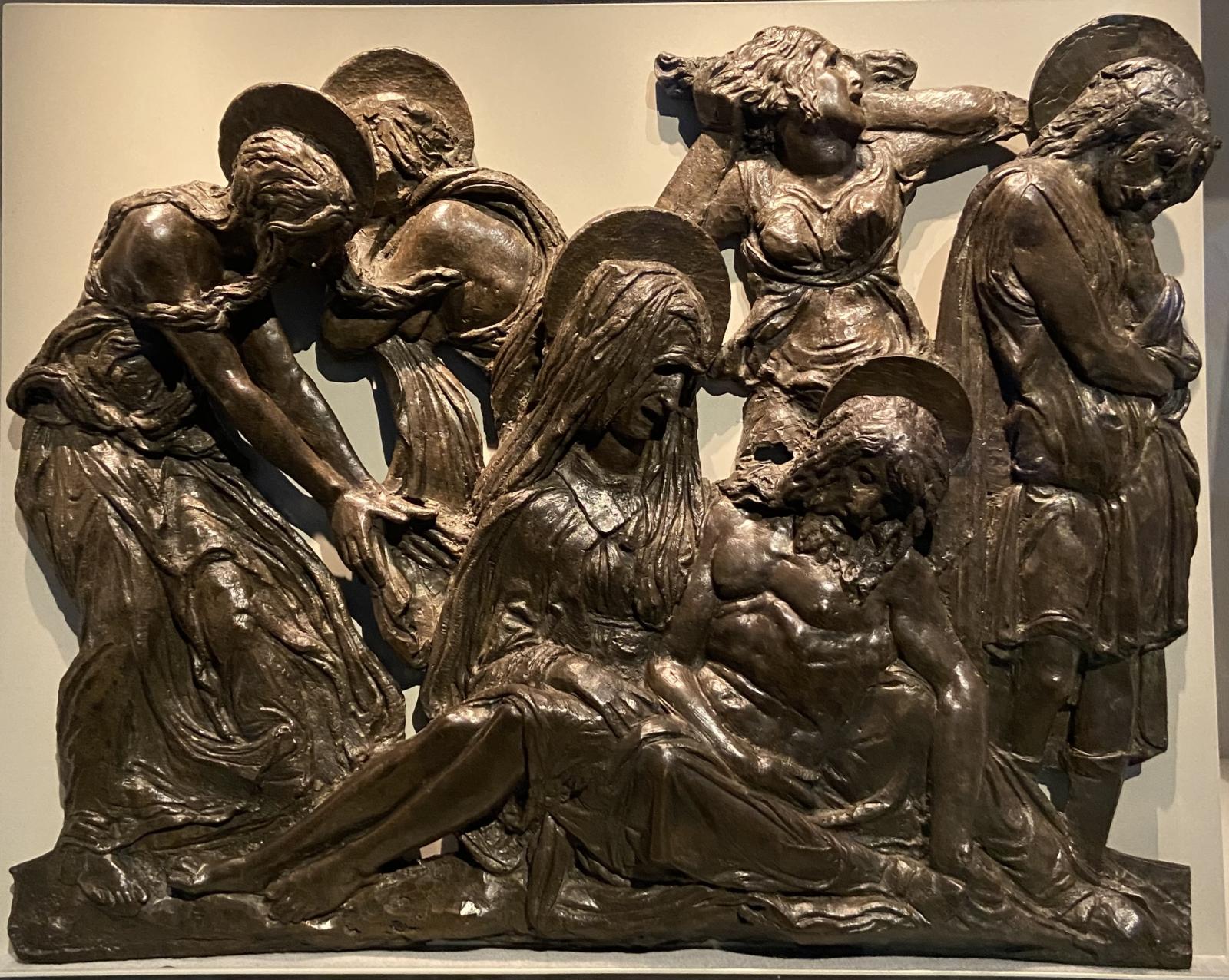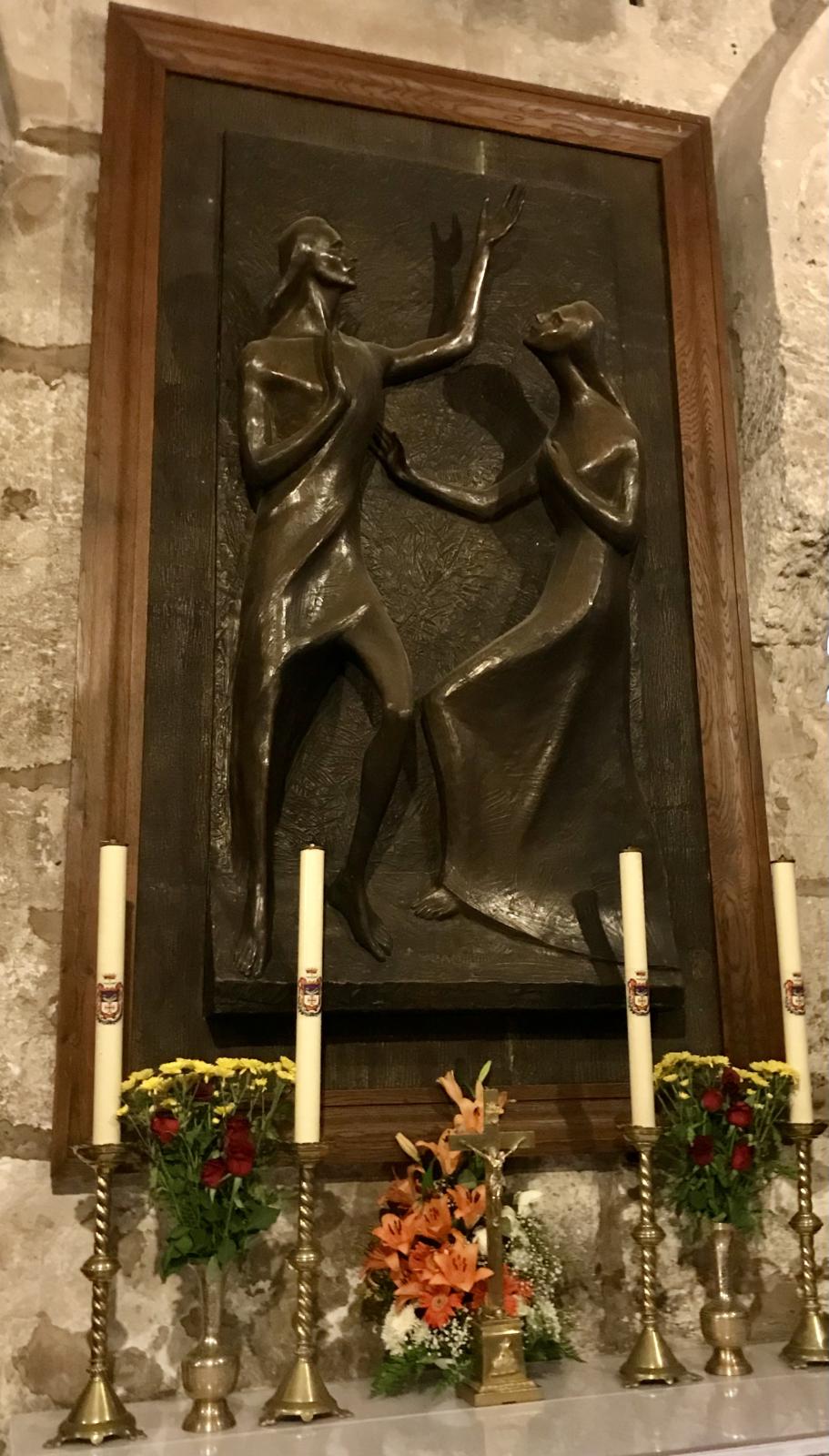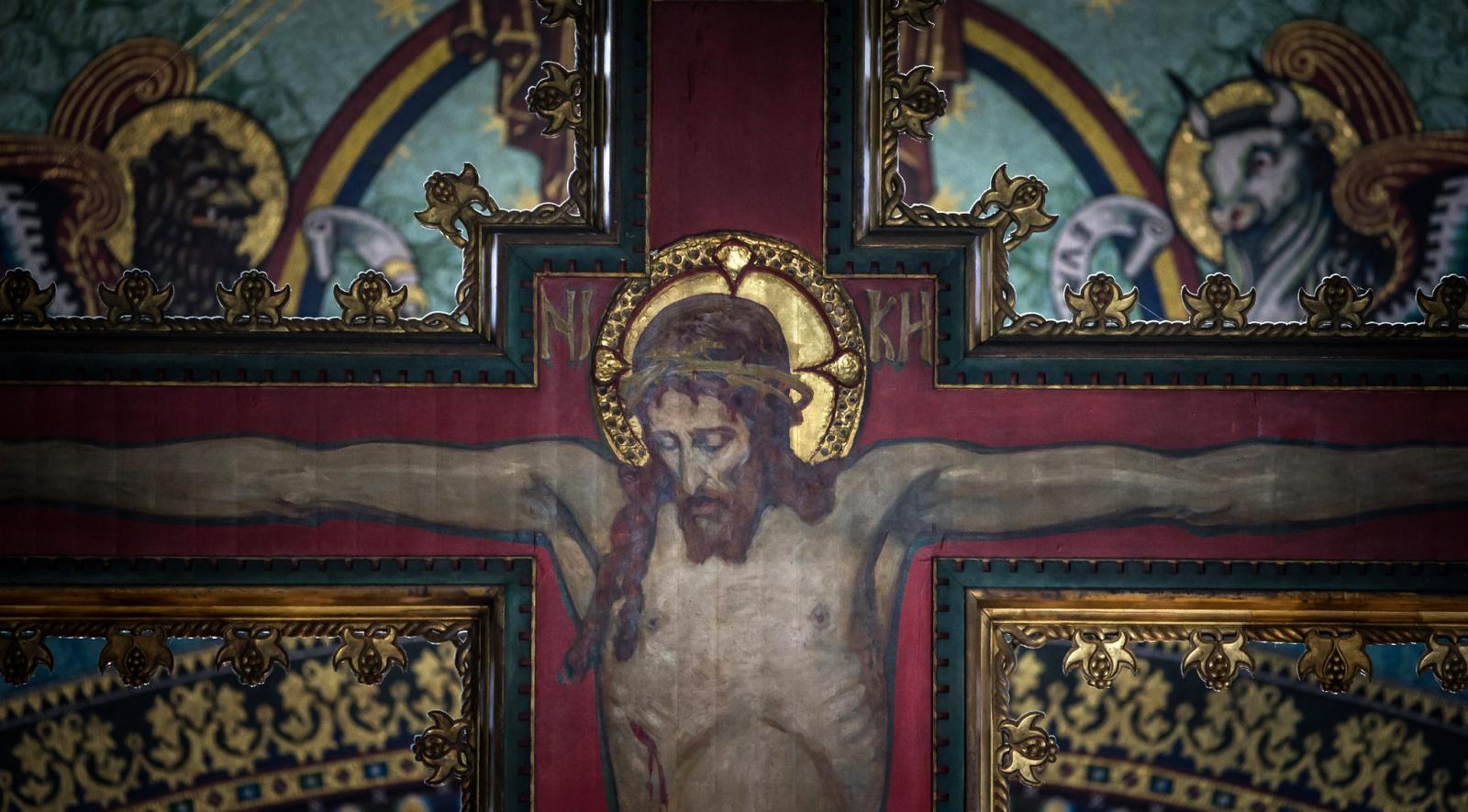This reflection invites four moments of prayer.
At the cross her station keeping…
 ‘At the cross her station keeping, stood the Virgin Mother weeping’.
‘At the cross her station keeping, stood the Virgin Mother weeping’.
Our Blessed Lady, Mother of tenderness and compassion, stands and prays at the foot of the cross. Her presence is constant and attentive. It is like the presence of a mother to her newly born baby, watching alertly for signs and movements of life. Each moment is precious and to be closely contemplated. It is like the woman who sits at the bedside of a dying person watching each movement of the chest, listening for the last breath and the final gasp.
The agony must have been intense, ‘how sad and sore distressed, Was that Mother highly blest, Of the sole begotten One!’ We join with mothers who stand at the foot of the cross; whether by a hospital bed, in a queue to visit her prisoner-son, and with those who grieve for their children they never see. Choices, arguments, struggles and tensions, and even marriages can lead to estrangement and divergence of pathways within families. There are many prodigal fathers and mothers who wait for their adult children to come home. Jesus, accept our prayers for the sick and dying, the lost and the lonely.
Mary Mother of the Church
From the cross, Jesus says to his mother, ‘Woman, behold your Son’. To the beloved disciple he says, ‘Behold, your mother’. These words form a new relationship between Our Blessed Lady and St. John; symbolically between the Holy Mother and the disciples of the Church. Mary is our mother, Mater Ecclesiae, Mother of the Church.
Under her ample mantle, all Christ’s disciples find protection from the stormy winds of life and security where there is peace and calm. She unties the knots which we create in life and offers the fragments of our lives to her Son who presents them to the Father. In the devotional words of St Louis de Montfort, ‘Through Mary to Jesus.’
In daily life it is mothers who can find ways for their children to build bridges to their fathers. They are the negotiators and enablers that are the catalysts for right words or gentle actions which cause shifts in relationships for the good. We, children of the Church, huddle under Mary’s cloak and find a home of peace. We are invited to make Our Blessed Lady our refuge from the storms we inevitably must weather and the chaos which surrounds us. In the words of the Memorare,
Remember, O most gracious Virgin Mary,
that never was it known
that anyone who fled to thy protection,
implored thy help,
or sought thy intercession,
was left unaided.
Inspired by this confidence
I fly unto thee,
O Virgin of virgins, my Mother.
To thee do I come,
before thee I stand,
sinful and sorrowful.
O Mother of the Word Incarnate,
despise not my petitions,
but in thy mercy hear and answer me.
Amen.
The Lamentation of Christ
Jesus is taken down from the cross and placed into the arms of his grieving mother.
We adore Thee, O Christ, and we praise Thee, because by thy Holy Cross Thou hast redeemed the world.
Placed into the loving arms of his mother, the body of Christ is a dead weight. The scene as night falls is weighed down with the pain of grieving love. It is a scene so often repeated in hospitals and funeral parlours. Lovingly and with tenderness Mary, the Mother of God, gazes upon the face of Christ which is now at peace, free from the pain and suffering of his passion and cross. The sculpture The Lamentation of Christ by Donatello evokes a response of compassion and mercy, thankfulness, and praise.
 The Blessed Virgin Mary grieves deeply for her Son. How deeply the words of Simeon must have resonated in her heart, ‘and a sword will pierce through your own soul also’. Some of the women tear their hair out overcome with bitter grief. As we see the sorrowful mother at the foot of the cross, who cannot be moved with compassion?
The Blessed Virgin Mary grieves deeply for her Son. How deeply the words of Simeon must have resonated in her heart, ‘and a sword will pierce through your own soul also’. Some of the women tear their hair out overcome with bitter grief. As we see the sorrowful mother at the foot of the cross, who cannot be moved with compassion?
She remembers Jesus’ infancy and childhood with tenderness and love. She recalls the words Jesus spoke when he was found in the temple among the teachers, ‘Did you not know that I must be in my Father’s house?’. She ponders his growth in understanding and wisdom as he moves from the house of Nazareth into the temple and makes his home the embrace of his merciful Father whom he calls ‘Abba’. She marvels at the mysteries of God and his choice of her as the ‘fair Ewe’ (Melito of Sardis) of the lamb of God.
We receive Jesus’ mercy poured out from his body on the cross, ‘by his wounds we have been healed’. We receive the water of baptism and the Blood of Eucharist. We offer our thanks and praise because there is no other worthy response to the gift we have received.
The Risen Christ meets his Blessed Mother
 Finally, we reflect on the meeting of Our Blessed Lady with the Risen Christ. Although such a meeting is not recorded in the scriptures, we find such an appearance in the Spiritual Exercises of St Ignatius as the first of the resurrection encounters.
Finally, we reflect on the meeting of Our Blessed Lady with the Risen Christ. Although such a meeting is not recorded in the scriptures, we find such an appearance in the Spiritual Exercises of St Ignatius as the first of the resurrection encounters.
Why would he not appear to his Mother? Jesus is the consoler who offers the gifts of joy and peace to his Blessed Mother. He renews her hope.
In the Church of the Holy Sepulchre in Jerusalem, there is a Chapel of the Apparition where this reunion is celebrated. It is a scene full of Easter joy and hope which is a contrast to the Fourth Station of the Cross. Our Blessed Lady looks upon the Risen Christ with his transformed wounds and he offers her the gifts of consolation and peace. Now she understands fully her life as Mother of the Church to strengthen and console the disciples of Christ. Her strong maternal presence is our hope.
Mother of Joy, pray for us.
Mother of Peace, pray for us.
Bishop John Sherrington
April 2023
Main image: Detail from the Rood in Westminster Cathedral (Mazur/CBCEW.org.uk)
Crucifixion: Near Bolsena, Italy (Photo by Bishop John Sherrington)
Madonna of the Recommended, Orvieto Cathedral (Photo reproduction of painting by Lippo Memmi, Public Domain via Wikimedia Commons)
The Lamentation of Christ by Donatello, recently on display at the Victoria and Albert Museum (Photo by Bishop John Sherrington)
Altar piece in the Chapel of the Apparation in the Church of the Holy Sepulchre, Jerusalem (Photo by Bishop John Sherrington)
